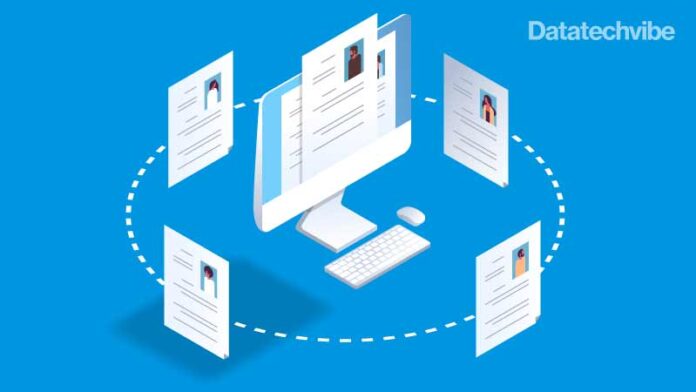Intelligent Document Processing is a rapidly emerging technology helping businesses to extract data automatically from unstructured, complex documents.
An IDC research predicts worldwide data to hit over 175 zettabytes, while the cloud is seemingly taking control of businesses worldwide. Scanning, uploading, processing, and extracting information from business documents can be painstakingly long. With an overload of paperwork, an entire team might have to work on the documents for weeks or even months. Organisations are forced to spend millions of dollars every year to process all business documents manually. The method is time-consuming, unscalable and prone to errors.
With contactless solutions on high demand, businesses hope to harbour a low touch or no touch paperwork handling. According to Gartner, 50 per cent of B2B invoices will be processed without manual support by 2025. So, are Optical Character Recognition (OCR) and Robotic Processing Automation (RPA) enough?
Businesses have leveraged OCR and RPA for decades. Yet, they might lack finesse and agility. While RPA can automate document processing, it is not convenient. The most critical process of manually entering all data into the system is still prevalent. Solving this issue is AI, it can extract data accurately, convert and validate unstructured data, and file automatically. Enterprises can witness a highly accurate and efficient data extraction, which is neither offered by RPA nor OCR.
The Power of Four
The modern document processing solution is an integration of several AI technologies, including natural language processing (NLP), deep learning, computer vision and machine learning (ML).
This higher form of OCR comes with the ability to overcome the pitfalls of layout variations, manual template creation, and low extraction accuracy. Validating the extracted data with existing records of Enterprise Resource Planning (ERP) and accounting, the IDP system adds an extra layer of advantage over manual data operations. They can process data from several document types including PDF, XML, and HTML from various channels such as e-mails, FTP sites, and SharePoint.
With the power of four of technology’s finest, the modern OCR technology paved the way for Intelligent Document Processing (IDP).
Also Read: Dark Data, A Gold Mine?
One Use Case, Several Opportunities
Imagine a bank automating a document using IDP. The process would be able to read the data via any medium, say e-mails, extract the data with 100 per cent accuracy, validate, and file it against the ERP system. All this conspires in the backend operations, while the employees and bank leaders focus on customer experience and other business strategies. Also, IDP can create a Higher Straight Through Processing (STP) and broaden the focus on customer experience.
The intelligent solution can cut short document management processes and extract additional data from documents while processing them per business rules. The solution can empower enterprise leaders with deep data insights by its built-in consoles that keep track of documents, batch status, and other statistics. Integrating with record systems, it supports access provisioning based on privilege to index, search, and information gathering. The extraction encompasses the identification of anomalies and patterns as well.
With over 80 per cent of all unstructured business data, IDP is a cross-industry requirement. Safe to say, the new age intelligence can pave the way for better opportunities and allow business leaders to completely focus on other matters of dire importance, including high profitability and business goals.
Be Wary of AI
The digital transformation is usually assisted by a vendor and experts warn enterprises to choose wisely. There have been cases of AI-washing in multiple industries in the past few years. Remember the Genius X toothbrush launched by Oral B? Although they claimed to be attached with AI capabilities, research revealed that the toothbrush only provided feedback using sensors.
Hence, the biggest criteria for enterprise investment is to make sure the vendor uses real AI to leverage their offered solutions. The purpose of IDP is to allow a seamless transition of the documenting process and any technical glitches or friction might cause critical disruption. Some verified vendors that offer Intelligent Document Processing are DIS, ABBYY, Ademero, Accenture, Capsys, Cognizant, and Amazon Textract.
Recent Launches and Top Players
Everest Groups’ “2021 Intelligent Document Processing (IDP) Products” named WorkFusion as a leader for its industry-specialised Intelligent Automation software. Their solutions include advanced ML models, analytics, and workflow processes designed for the Banking, Financial Services, and Insurance (BSFI) sector. Additionally, 10xDS offers image processing solutions as part of their IDP system for a Middle East bank.
Hyperscience, an automation company, promises 99.5 per cent accuracy. Its intelligent automation platform can automate complex documentation with ease of integration, accuracy, and improved configurability.
Moreover, addressing the demand for a no-code or low code platform, Vantage 2 was launched by ABBYY. The IDP software begins with a pre-trained model that reads the document and makes it discoverable to an automation tool such as RPA, Business Process Management (BPM), or Enterprise Content Management (ECM).
Also Read: Digitisation Top Priority For IT leaders in UAE
Are Customers Aware?
An important question asked by several technology experts and critics revolves around the privacy and consent issue. Are the customers okay with an AI reading their document? Industry leaders believe that the advancements in AI and rapid digitalisation has broadened customer expectations. They are not just comfortable and aware of IDP but in turn, want better results. Their expectations include extraction and classification of data with high accuracy, allowing them to have a faster customer experience.
While the global industry scrambles for stability and revenue growth, experts encourage the adoption of IDP. With its potential to achieve unrealised productivity gains, businesses can incorporate the next generation solution into their core business strategy. It cannot hurt the business as customers want it too.









